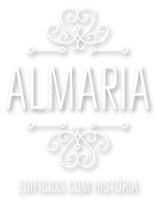Important dates in Portuguese history
June 24, 1128
Battle of São Mamede – Fought between D. Afonso Henriques and his mother D. Teresa, after the victory of D. Afonso Henriques with the troops of the Portucalense barons against the troops of the Galician Count Fernão Peres de Trava, D. Afonso Henriques proclaims himself Sovereign of the County of Portucalense.
October 5, 1143
Treaty of Zamora – Result of the peace conference between D. Afonso Henriques and his cousin D. Afonso VII of León and Castile. Considered the date of Portugal's independence and the beginning of the Afonsine dynasty. D. Afonso Henriques or Afonso I – First King of Portugal.
August 14, 1385
Battle of Aljubarrota – Portuguese troops commanded by D. João I of Portugal and his constable D. Nuno Álvares Pereira, and the Castilian army and its allies led by D. João I of Castile. The result was the definitive defeat of the Castilians, the end of the crisis of 1383-1385 and the consolidation of D. João I, Master of Aviz, as King of Portugal, the first of the Aviz Dynasty. The Portuguese-British Alliance emerged strengthened from this battle and would be sealed a year later, with the signing of the Treaty of Windsor and the marriage of King D. João I with D. Filipa of Lancaster.
August 21, 1415
Conquest of Ceuta – D João I sends Portuguese troops to North Africa with the aim of increasing the expansion of the Christian faith by increasing the territories where Christianity could be implemented. Ceuta's geographical position would allow it to control the entry and exit of ships coming from the Atlantic to the Mediterranean and vice versa through the Strait of Gibraltar, so that the Algarve coast would no longer be attacked by pirates originating or based in the Muslim city.
1434: Rounding of Cape Bojador
Gil Eanes, sent by Prince Henry the Navigator, aimed to round Cape Bojador, known as “Cape Fear”, which had never been rounded due to frequent fog and strong winds. Gil Eanes equipped a 30-ton barque with a single mast, a single round sail, partially covered and also powered by oars. With a crew of only 15 men. Upon arriving near Cape Fear, Gil Eanes decided to manoeuvre westwards, away from the African coast. After a whole day of sailing far from the coast, he found himself in a bay with mild winds, so he turned southeast and soon realised that he had left Cape Bojador behind. The passage of Cape Bojador was one of the most important milestones in Portuguese navigation. It overturned the old medieval myths and paved the way for the great discoveries.
1488: Rounding the Cape of Good Hope
Discovered by the navigator Bartolomeu Dias. Chronicles of the time tell that, as it was sighted after several days in which the sailors suffered violent storms, the navigator named it Cape of Storms. Upon returning, however, with the news, King John II of Portugal changed its name because, when rounded, it showed the connection between the Atlantic Ocean and the Indian Ocean and promised the long-awaited arrival in India. He therefore called it the Cape of Good Hope.
June 7, 1494: Treaty of Tordesillas
Signed in the Castilian town of Tordesillas, this was a treaty between the Kingdom of Portugal and the Crown of Castile to divide the “discovered and undiscovered” lands between the two crowns outside Europe. The treaty defined the demarcation line as the meridian 370 leagues west of the island of Santo Antão in the Cape Verde archipelago. This line was located halfway between these islands (then Portuguese) and the Caribbean islands discovered by Columbus.
1497-1499: Discovery of the sea route to India
Under the command of the Portuguese navigator Vasco da Gama during the reign of King Manuel I. One of the most notable voyages of the Age of Discovery.
April 22, 1500: Discovery of Brazil
Fleet commanded by Pedro Álvares Cabral to the territory where Brazil is located today. Pedro Alvares Cabral leaves in March with 1300 crew members with the aim of reaching India. Due to a major storm, the fleet was forced to change its route to the southwest, ending up in South America, on the Island of Vera Cruz.
May 23, 1536
The Inquisition was established in Portugal.
August 4, 1578: Battle of Alcácer Quibir
Battle fought in northern Morocco near the city of Al-Qassim between Tangier and Fez. The Portuguese, led by King Sebastian, fought a large Moroccan army led by Sultan Mulei Moluco, who enjoyed Ottoman support. The battle resulted in the Portuguese defeat, with the disappearance in combat of King Sebastian and the imprisonment or death of the cream of the Portuguese nobility. Thus was born the myth of Sebastianism: “Finally I will end my life and everyone will see that I was so fond of my country that I was not only content to die in it, but with it,” Luis de Camões.
December 1, 1640: Restoration of Independence
It is the name given to the revolutionary coup d'état that occurred on December 1, 1640, led by a group called the Forty Conspirators and which spread throughout the Kingdom, due to the revolt of the Portuguese against the attempt to annul the independence of the Kingdom of Portugal by the government of the Castilian Philippine Dynasty, and which culminated in the establishment of the 4th Portuguese Dynasty - the House of Braganza - with the acclamation of D. João IV.
November 1, 1755: Lisbon Earthquake
It resulted in the almost complete destruction of the city of Lisbon, especially in the Baixa area, and also affected a large part of the Algarve coast and Setúbal. The earthquake was followed by a tsunami - believed to have reached a height of 20 metres - and multiple fires, and certainly caused more than 10,000 deaths. It was one of the deadliest earthquakes in history. Seismologists estimate that the 1755 earthquake reached magnitudes between 8.7 and 9 on the Richter scale.
October 18, 1807: First Napoleonic Invasion
Part of Napoleon's plan to impose a Continental Blockade on all of Europe. Portugal did not accept the blockade and, as a result, a French army commanded by General Junot invaded Portugal, resulting in the royal family fleeing to Brazil (1807-1821). With the help of the English army commanded by Wellington, the French troops were defeated and forced to abandon Portugal.
August 24, 1820: Liberal Revolution
The merchant bourgeoisie saw its business threatened by the opening of Brazilian ports to international trade. The port garrison was outraged by the lack of payment. The city's discontented merchants began a revolution with the support of all social classes (nobility, clergy and Portuguese army). A liberal revolutionary movement took place that marked the end of the Ancien Régime and instituted a constitutional monarchy.
February 1, 1908: Regicide
Taking place in Praça do Comércio (at the time better known as Terreiro do Paço) in Lisbon, it profoundly marked the History of Portugal, as it resulted in the death of King D. Carlos and his son and heir, the Royal Prince D. Luís Filipe de Bragança, marking the end of the last serious attempt to reform the Constitutional Monarchy and, consequently, a new escalation of violence in the country's public life.
October 5, 1910
Implementation of the Republic - was the result of a revolution organized by the Portuguese Republican Party, which began on the 2nd and was victorious in the early hours of October 5, 1910, which overthrew the constitutional monarchy and established a republican regime in Portugal.
May 28, 1926: Military Dictatorship
A nationalist and anti-parliamentary military coup that ended the First Portuguese Republic. An act that led to the establishment of the Military Dictatorship, with the publication of a dictatorial decree that appointed General Carmona as President of the Republic.
1930 – 1974: Salazarism
António de Oliveira Salazar, a young economist born in Santa Comba Dão, a seminarian and a man of Catholic Action, became Head of Government. In 1933, he consolidated his dictatorship by approving a new Constitution based on corporative and confessional principles and dissolving the political parties. Thus was born the Estado Novo. Between 1939 and 1945, Portugal did not enter World War II. Salazar, a sympathizer of Mussolini and Hitler, when he began to see that his defeats were imminent, allied himself with the Americans, handing over some bases in the Azores to the Allied forces.
February 4, 1961: Colonial War
Period of confrontations between the Portuguese Armed Forces and the forces organized by the liberation movements of the former overseas provinces of Angola, Guinea-Bissau and Mozambique, between 1961 and 1974.
September 23, 1968: Marcelo Caetano takes office
Salazar falls from his chair and becomes very ill. On 4 September 1968, he undergoes surgery for a brain haematoma caused by his famous fall from his chair. Salazar's condition worsens and his doctors declare him physically and psychologically incapable of continuing to perform his duties. The President of the Republic, Américo Tomás, dismisses Oliveira Salazar, a fact that the old dictator ignores until the end. A show is set up around him to make him believe that he still holds the fate of Portugal in his hands. After hearing from around 40 personalities from the political and military elites, as well as financial figures of the regime, President Américo Tomás appoints Professor Marcelo Caetano to replace Salazar.
April 25, 1974: Carnation Revolution
In the early hours of 25 April, MFA soldiers occupied the studios of Rádio Clube Português and, through the radio, explained to the population that they wanted the country to become a democracy again. They played songs that the dictatorship did not like, such as Grândola Vila Morena, one of the songs that formed part of the code signals to start the operations, these were songs by Paulo de Carvalho and Zeca Afonso. At the same time, a military column with tanks, commanded by Captain Salgueiro Maia, left the Cavalry Training School in Santarém and marched towards Lisbon. In the capital, it took up positions near the ministries and then surrounded the GNR barracks in Carmo, where Marcelo Caetano, Salazar's successor as head of the dictatorship, had taken refuge. During the day, the population of Lisbon joined the military. What had been a coup d'état turned into a true revolution. At one point, a flower seller began to distribute carnations, and the soldiers began to stick the stem of their carnations into the barrel of their rifles, while the civilians placed the flower on their chests. Thus began the Carnation Revolution. At the end of the afternoon, Marcelo Caetano surrendered and handed over power to General Spínola. A year later, the Portuguese voted freely for the first time.
12 June 1985: Accession to the European Union
Portugal signed the accession treaty to the European Economic Community (EEC). Prime Minister Mário Soares led the delegation that formalized the country's entry into the European project at the Jerónimos Monastery.



